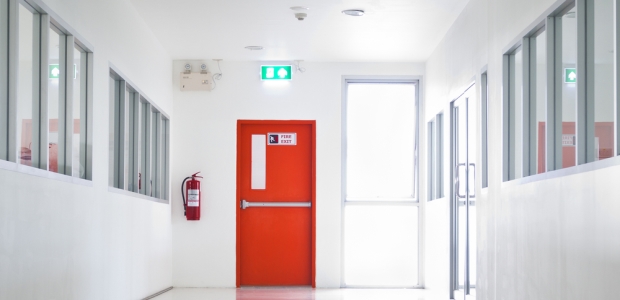
CMS Issues Final Rule to Increase Facilities' Emergency Preparedness
The rule will require Medicare and Medicaid participating providers and suppliers to develop an emergency plan using an all-hazards approach and to meet other industry best practices.
The federal Centers for Medicare & Medicaid Services (CMS) has issued a final rule to establish consistent emergency preparedness requirements for health care providers participating in Medicare and Medicaid, stating that the regulation will increase patients' safety during emergencies and ensure more coordinated response to natural and man-made disasters.
"Over the past several years, and most recently in Louisiana, a number of natural and man-made disasters have put the health and safety of Medicare and Medicaid beneficiaries – and the public at large – at risk. These new requirements will require certain participating providers and suppliers to plan for disasters and coordinate with federal, state tribal, regional, and local emergency preparedness systems to ensure that facilities are adequately prepared to meet the needs of their patients during disasters and emergency situations," the agency's news release about the Sept. 8 stated.
"Situations like the recent flooding in Baton Rouge, Louisiana, remind us that in the event of an emergency, the first priority of health care providers and suppliers is to protect the health and safety of their patients," said CMS Deputy Administrator and Chief Medical Officer Dr. Patrick Conway, M.D., MSc. "Preparation, planning, and one comprehensive approach for emergency preparedness is key. One life lost is one too many."
"As people with medical needs are cared for in increasingly diverse settings, disaster preparedness is not only a responsibility of hospitals, but of many other providers and suppliers of health care services. Whether it's trauma care or long-term nursing care or a home health service, patients' needs for health care don't stop when disasters strike; in fact, their needs often increase in the immediate aftermath of a disaster," added Dr. Nicole Lurie, HHS' assistant secretary for preparedness and response. "All parts of the health care system must be able to keep providing care through a disaster, both to save lives and to ensure that people can continue to function in their usual setting. Disasters tend to stress the entire health care system, and that's not good for anyone."
CMS reports that it reviewed current Medicare emergency preparedness regulations for providers and suppliers and concluded the regulatory requirements were not comprehensive enough to address the complexities of emergency preparedness; they did not address the need for communication to coordinate with other systems of care within cities or states; contingency planning; or training of personnel. So the final rule requires Medicare and Medicaid participating providers and suppliers to meet these four industry best practices:
1. Emergency plan: Based on a risk assessment, develop an emergency plan using an all-hazards approach focusing on capacities and capabilities that are critical to preparedness for a full spectrum of emergencies or disasters specific to the location of a provider or supplier.
2. Policies and procedures: Develop and implement policies and procedures based on the plan and risk assessment.
3. Communication plan: Develop and maintain a communication plan that complies with both federal and state laws.
4. Training and testing program: Develop and maintain training and testing programs, including initial and annual training, and conduct drills and exercises or participate in an actual incident that tests the plan.
CMS said these standards are adjusted to reflect the characteristics of each type of provider and supplier. For example, outpatient providers and suppliers such as ambulatory surgical centers and end-stage renal disease facilities won't be required to have policies and procedures for provision of subsistence needs; hospitals critical access hospitals, and long-term care facilities will be required to install and maintain emergency and standby power systems based on their emergency plan.
In response to comments, CMS removed the requirement for additional hours of generator testing, added flexibility to choose the type of exercise a facility conducts for its second annual testing requirement, and decided to allow a separately certified facility within a health care system to take part in that system's unified emergency preparedness program.
The regulations will take effect 60 days after publication in the Federal Register, and health care providers and suppliers affected by the rule must comply and implement all regulations one year after the effective date.